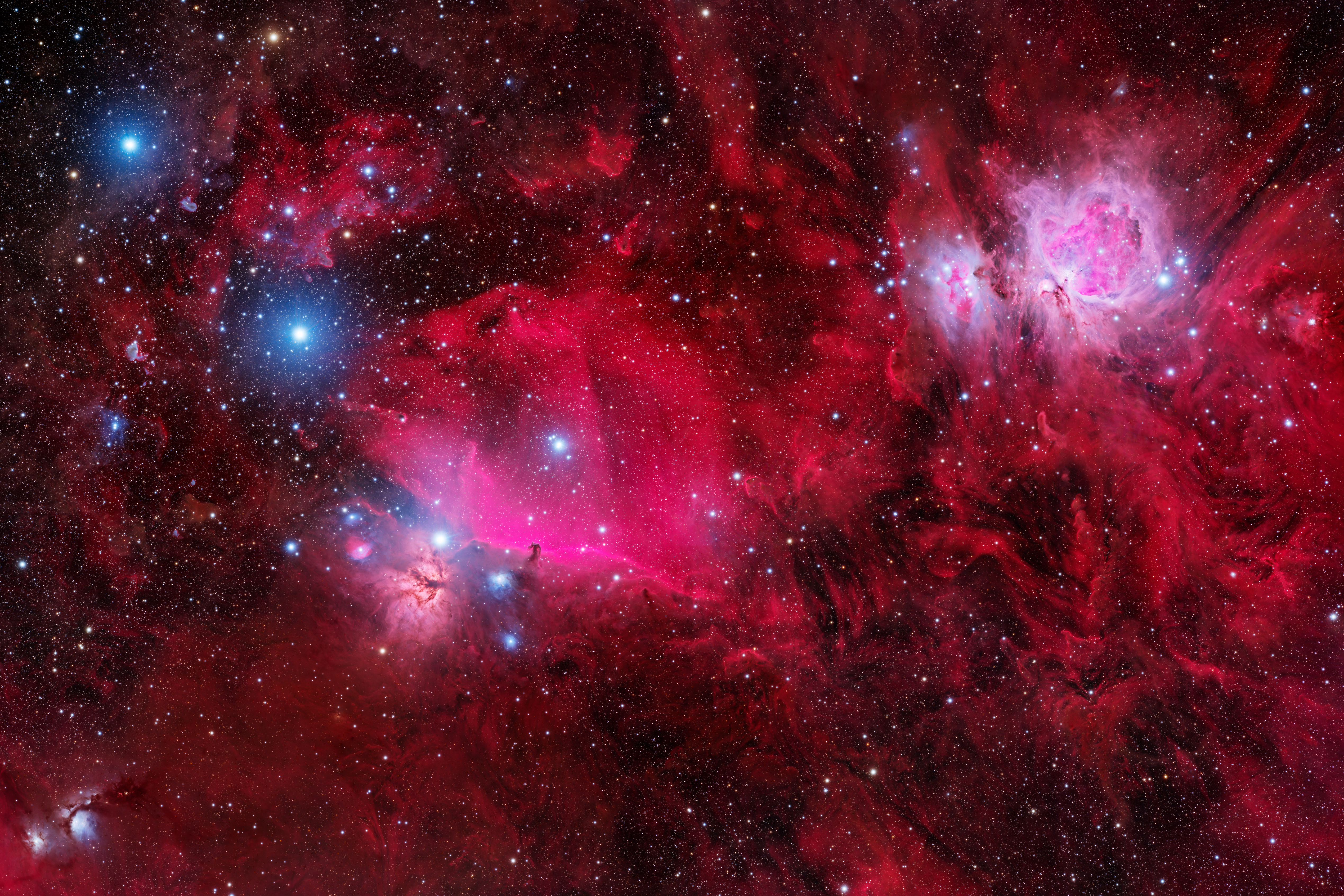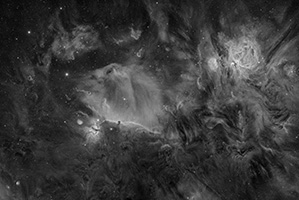
 |
The Belt and the Sword |
|||||||||||||||||||||
About This PhotographThis is a deep photograph of a large section of the constellation of Orion chock full of amazing and beautiful objects. This entire field is an active star-forming region, bathed in the glow of turbulent clouds of ionized hydrogen and subtly glowing clouds of dust. The three bright stars on the left are, from top to bottom, Mintaka, Alnilam, and Alnitak, and form Orion's belt. To the right of Alnitak is the famous and photogenic Horsehead Nebula, a dense knot of dust silhouetted on a curtain of ionized hydrogen gas. Just below and to the left of the Horsehead is a small reflection nebula known as NGC 2023. To the left of that is the Flame Nebula, and down in the lower-left corner is the nebula known as M78. Toward the upper right of the frame is the great Orion Nebula, a huge cavity in the clouds of gas and dust lit up almost entirely by the four bright stars near its center known as the Trapezium cluster. To the left of the Orion Nebula is a smaller emission/reflection nebula known as the Running Man. To the naked eye, the stars of the Running Man, the stars of the Trapezium, and the bright star to the right of the Orion Nebula form what we see as Orion's sword. Further to the right, near the edge of the frame, is a small blue reflection nebula known as NGC 1999 with a pawn-shaped black patch consisting of truly empty space. This is by far my most ambitious photograph, comprised of a four-frame mosaic through four separate filters (red, green, blue, and hydrogen-alpha). Over 700 individual exposures totaling 119 hours were required to capture the depth and detail seen here. The full-resolution photograph, all 217 megapixels of it, is presented here in a zoomable format so that the full detail can be explored. Click here for an annotated photograph. | |||||||||||||||||||||
|
Related Photographs | |||||||||||||||||||||
|---|---|---|---|---|---|---|---|---|---|---|---|---|---|---|---|---|---|---|---|---|---|
| |||||||||||||||||||||
|
|||||||||||||||||||||
